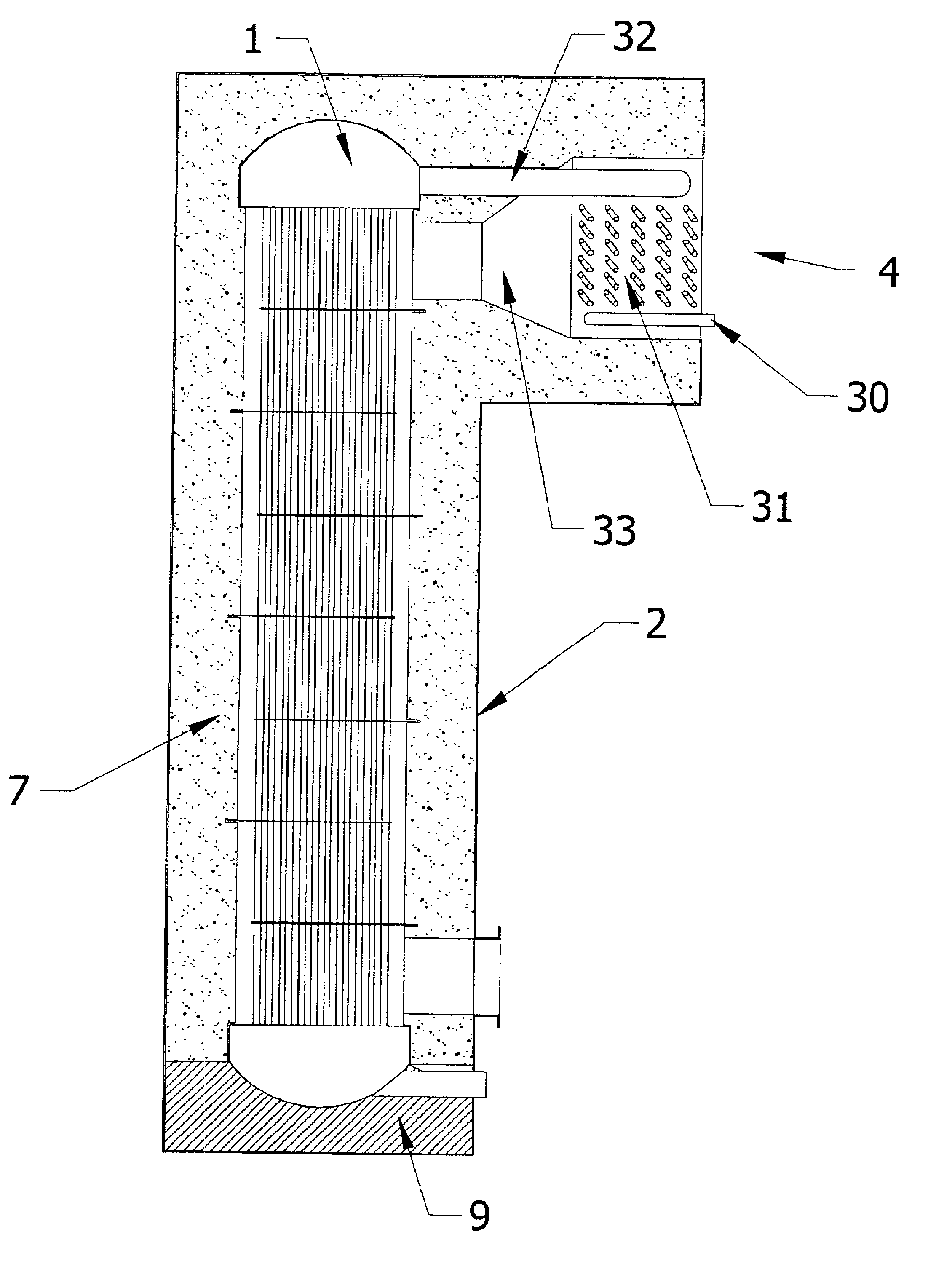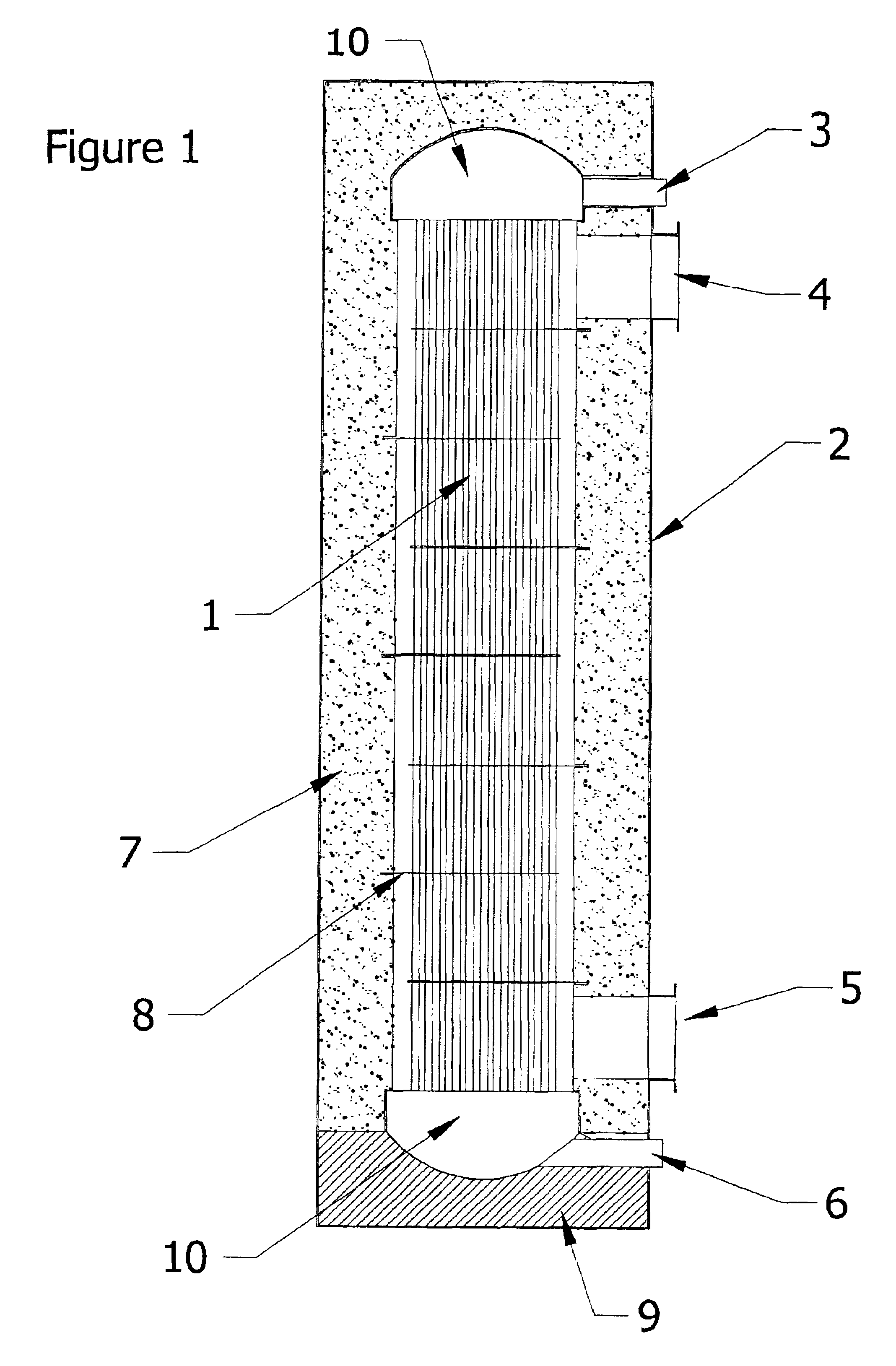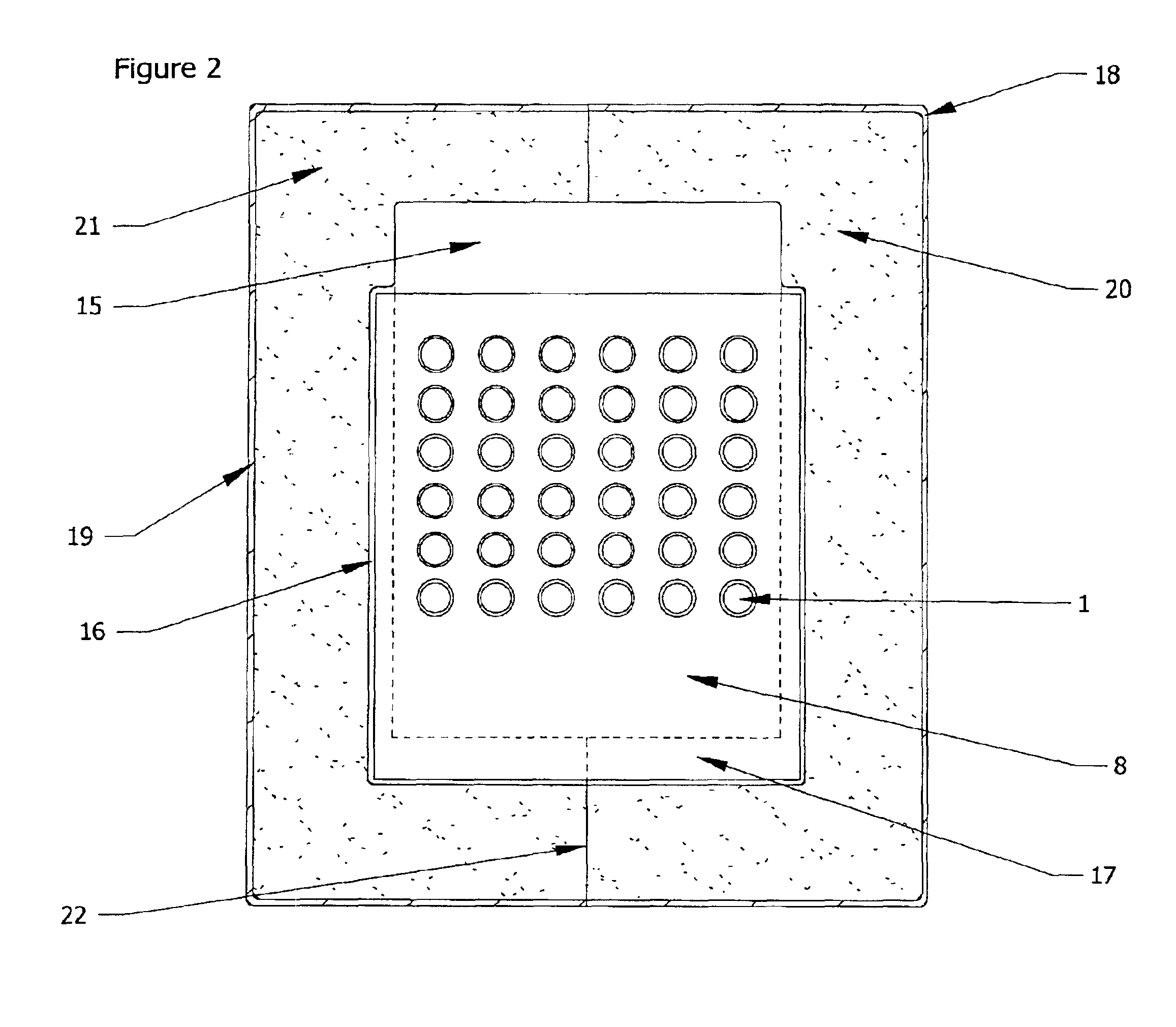First, because of the high operating temperatures of many heat exchange reactors, particularly those for
steam reforming of hydrocarbons, the strength of the
internal pressure shell material is greatly reduced, which requires the shell thickness to be very thick relative to similar pressure vessels operated at ambient temperatures. In addition, the pressure shell material, which is usually metallic, must be selected from those alloys that have adequate high-temperature strength and
corrosion resistance for the operating conditions. This usually requires stainless steel or
nickel-based alloys, which are far more expensive and difficult to fabricate than materials suitable for lower-temperature construction. The use of a thick, metallic shell is particularly disadvantageous for heat exchange reactors because the shell must be heated to the
operating temperature during startup of the reactor, which considerably lengthens the startup period and increases the
thermal energy required for startup.
Second, the close fit between the pressure shell and the components of the internal tube bundle such as baffles or fins requires very close manufacturing tolerances, which undesirably increases the manufacturing cost of both the pressure shell and the tube bundle. This problem is exacerbated by the fact that most pressure shells are round in
planform, which requires the aforementioned baffles and fins to be manufactured with a corresponding round
planform: this is difficult to manufacture using high-rate techniques (such as
stamping) and is wasteful of raw materials.
Third, the round
planform of typical tubular arrays and
heat exchanger shells undesirably causes the formation of thermal gradients both in the direction of fluid flow across the tube bundle and normal to the direction of flow unless a chorded array of tubes is employed. A chorded array is less efficient in filling a round planform shell of a given
diameter, however, which increases the ratio of shell
mass to reactor
mass and exacerbates the deleterious effects of the heavy reactor shell described above. In the absence of a chorded array, extreme thermal stresses will be experienced in the tube arrays, thus reducing both their useful strength and useful operational lifetime. This problem is particularly acute in reactors employing very high shell-side inlet temperatures and rapid heat exchange, which features are otherwise desirable in heat exchange reactors to minimize volume, weight and cost.
Fourth, the installation of the insulation
layers around the exterior of the pressure shell exposes the insulation to mechanical damage unless a separate outer covering is employed to prevent
impact damage,
water damage,
wind damage, or damage due to the action of
vermin. This outer covering undesirably adds weight, volume and cost to the heat exchange reactor without serving any other purpose. In addition, the installation of this covering must accommodate the means of structural support of the heat exchange reactor, and must therefore often be of a complex shape to prevent the ingress of water.
Fifth, the structural supports are generally connected to the tube bundle or to the pressure shell. Because these components are generally at elevated temperature, the structural members serve as a
route for substantial heat loss to the ambient through rapid heat conduction away from heat exchange reactor surface. Because the structural members are also then at elevated temperature, they are usually also constructed of expensive alloys. Finally, the heat loss to the structural support, as well as its heavy metallic construction, further increases the required energy to bring the heat exchange reactor to operating conditions beyond the already undesirable state of affairs engendered by the use of the metallic pressure shell.
 Login to view more
Login to view more  Login to view more
Login to view more 


